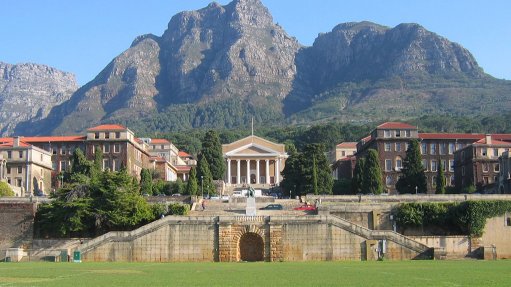
Universities should be equitable learning spaces for people of all races, economic backgrounds and genders. In South Africa, creating such spaces – both in higher education and in society more broadly – is happening under the banner of transformation.
But how will we know when transformation is achieved? What measure should be used when considering the successes and the gaps in this process? Do we take a single figure and extrapolate?
For instance, most undergraduate students in South Africa are women. If just this figure is used when mapping change, we could argue that gender transformation has been achieved. The numerical majority of university students in South Africa are black. Surely this means our institutions are racially transformed?
But dig deeper and you’ll see that these arguments are not especially robust. The numbers don’t reveal much about students' genuine educational choices, aspirations or agency. They say nothing about how students adapt to unsatisfactory curricula, teaching and learning.
Amartya Sen and Martha Nussbaum’s theory of normative “human capabilities” may offer universities a framework for genuine change – and provide a useful marker against which this transformation can be measured.
Understanding the theory
In Sen and Nussbaum’s approach, inequality in higher education is understood as the deprivation of people’s opportunities and freedoms for well-being and agency, in comparison with others. Advantage and disadvantage are measured against individuals' “capabilities”, as well as the fairness of social and educational arrangements.
Take Naledi, a black South African woman from a rural area in the Free State province who is averaging 60% in her university subjects and passing all her courses. She looks like a good statistic for completion rates. But how would she fare by Sen’s measures?
Naledi, like all other students, arrives at university with a bundle of “resources” such as family support, public policy, a government bursary and so on. Some students will have a thicker bundle; for example, if they attended a good school.
Sen calls Naledi’s bundle her “means to achieve”. But how does higher education enable Naledi to convert her resources into actual learning, genuine agency and a realisation of her personal aspirations to become a social worker – what Sen calls her freedoms to achieve, or capabilities?
Sen argues that it is each person’s capabilities that should constitute “the informational basis of justice”. This is the information on which a judgement directly depends. He proposes that every person’s capabilities and the way they work should be the metric of equality.
Let’s apply this “informational basis of justice” to South Africa’s universities. Transformation would be evaluated by how or if each person’s opportunities (their freedoms or capabilities, to use Sen’s language) and plural functionings – what people can be and do both through their own choices and the actions of others – have been expanded to choose a life they have reason to value. This is a person’s achieved well-being.
Plural functionings might include critical thinking, affiliations with others and citizenship. A person’s real opportunities to think critically and to affiliate with others would constitute the corresponding capability. Sometimes we can work out a valuable capability from the absence of a valued functioning.
Naledi confides in a lecturer that, although she passes her exams, she doesn’t participate in lectures and never asks questions because she is too embarrassed. She values being able to participate in her classes but is not able to do so. The role of higher education in this instance would be to support her through teaching and learning to achieve this. This gives Naledi an opportunity to achieve what she values educationally.
It is also important to address the security of functionings like thinking critically so that in the future students can continue to flourish. Naledi completed a university access course with small classes and dedicated lecturers. She is academically literate once she’s finished this course. But she loses confidence during her degree study in very large lecture classes with unapproachable lecturers – and her capability for academic literacy actually diminishes.
Knowledge empowers
Universities and policymakers need information about each person’s bundle of resources and their commodities – their means to achieve. We must also explore the personal and social conversion factors that shape each student’s freedom to achieve, as well as understanding the choices and values that convert these freedoms into actual achievements and realised agency.
How can this information be gathered? At the University of the Free State’s Centre for Research on Higher Education and Development we are engaged in a range of research projects – qualitative, quantitative and participatory – to understand better how to foster student capabilities as a matter of transformation. We are also exploring how universities can create enabling conditions for equality in capabilities.
Where there are gaps, we must examine the fairness of wider social arrangements: public policy, resources, educational quality. This will help universities to understand why one student is doing well and another is struggling. Arrangements and policy can be adjusted accordingly.
Higher education is powerful. Access to it multiplies other capabilities: freedom of choice, widening economic opportunities and advancing citizenship for social well-being. Sen emphasises that our ability to exercise freedom may depend directly on the education we receive. This makes education a foundation of the capability approach.
![]()
Written by Melanie Walker, Professor of Higher Education and Human Development, University of the Free State
This article was originally published on The Conversation. Read the original article.